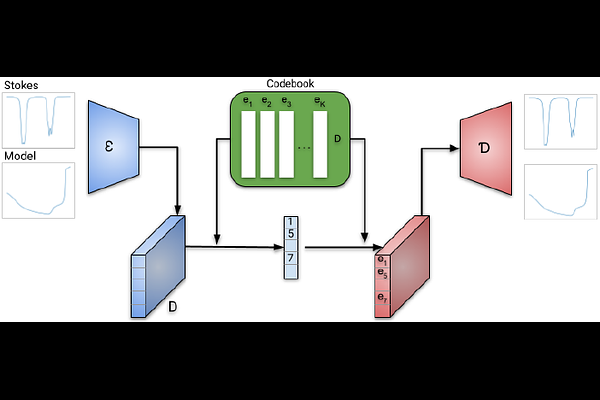Neural translation for Stokes inversion and synthesis

Neural translation for Stokes inversion and synthesis
A. Asensio Ramos, J. de la Cruz Rodriguez
Abstract[Abridged] The physical conditions in stellar atmospheres can be obtained from the interpretation of solar spectro-polarimetric observations. However, traditional inversion codes are computationally demanding, especially for lines whose formation is complex. The necessity of faster alternatives has motivated the emergence of machine learning solutions. This paper introduces an approach to the inversion and synthesis of Stokes profiles inspired by neural machine translation. Our aim is to develop a generative model that treats Stokes profiles and atmospheric models as two distinct ``languages'' encoding the same physical reality. We build a model that learns how to translate between them, also providing estimates of the uncertainty. We employ a tokenization strategy for both Stokes parameters and model atmospheres, which is learned using a VQ-VAE, a neural model used to compress the data into a lower dimensionality form. The core of our inversion code utilizes a transformer encoder-decoder architecture to perform the translation between these tokenized representations. The model is trained on a database of synthetic Stokes profiles derived from perturbations to various semi-empirical solar atmospheric models, ensuring a wide range of expected solar physical conditions. The method effectively reconstructs atmospheric models from observed Stokes profiles, showing better constrained models within the region of sensitivity of the considered spectral lines. The latent representation induced by the VQ-VAE helps accelerate the inversion by compressing the length of the Stokes profiles and model atmospheres. Additionally, it helps regularize the solution by reducing the chances of obtaining unphysical models. As a final advantage, the method provides the generative nature of our model, which naturally yields an estimate of the uncertainty in the solution.